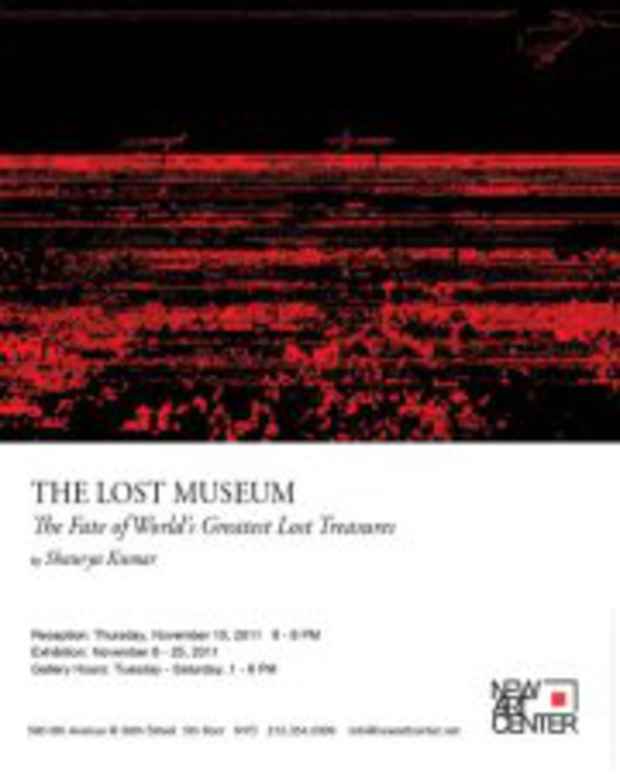Shaurya Kumar "THE LOST MUSEUM: The Fate of World's Greatest Lost Treasures"
New Art Center

This event has ended.
It is said that the shape of our culture is very much defined by the art that shapes up in that particular era; that the art and culture are very much the alter egos of one another. It reflects the thought of masses and elites, their concepts of divine & material, of purity & pollution and about their socio-political- economic values. Hence, the artwork embodies a past, a history in itself. Loss of any art is thus a loss of history, a loss of the spirit of bygones. Hence, our tendency to forget the bygones becomes very much crucial and significant. It is quite human that once something is out of sight, it is more often than not, out of mind too.
In the past, this tendency to forget was more prevalent than it is now, as the art could only be documented by creating copies of a masterpiece made by various artists, who would somehow unintentionally place their own artistic styles and understandings in the copies. Another very inaccurate way of documentation, although not so much for art, was through verbal descriptions. This form of documentation was also notoriously inadequate, as each person who would be entrusted of visualizing the work, would create something unique, many a times, quite unlike the original.
Historians played their own crucial and significant role in making history very subjective. With a desire to play god, they often chose, based on their own personal liking and understanding, what should go in history in golden words, what should be subdued and worst of all, what should be completely eliminated. Despite all the efforts to preserve art, since times immemorial, much of the art work has been destroyed either during a military coup, or when the ruling regime is in general disagreement with the philosophy of that work itself. But since about a century, with the advent of technology, there has been a major drive to preserve and learn more about the past than ever before. Indeed, this zeal has been accompanied by the new keenness to learn and discover, supported with state-of-the-art technology. Robert Adams in his book The Lost Museum says – “We know the past better than the past knew itself”. With the invention of camera, video films, photo copiers & fax, art was granted an immortal youth. It seemed that art and history had finally found a guardian.
The early 1980s witnessed another uproar, a great effort to preserve art, history and vanishing cultures, this time using the advanced and highly sophisticated modern technology. In 1982, number of museums round the world joined hands to form The Council for Documentation of Lost Art & Cultural Heritage (CDLACH), with the primary aim to document and preserve, especially the lost art. Much of the existing documentation was converted into electronic database, forming the largest electronic archive of art and culture till date. It was one of the enthusiastic efforts that was made with a belief that it will last forever, maintaining the digital database record for all times to come.
Only after about two and a half decades since the archive was created, much of the database inaccessible. While some of electronic files didn’t even open, many had changed beyond recognition. “They looked like parts of the old Atari video games, or images that you can see when one tries to open an old CD or a floppy disk” says the head engineer who was rushed to the site after the error was first reported. This exhibition is a part of the collection of artworks that were found corrupted and stands as an aftermath of the ‘final loss’ for even the lost art has been lost forever. In response to this crisis and in an attempt to freeze the digital relics without any delay, the CDLACH has printed the corrupted images of artworks lost/destroyed during conflict situations/wars. A Program for Conservation of Art in Electronic Media (PCAEM) has also been started to retrieve and preserve any possible information. - From the Artist's Website
Media
Schedule
from November 08, 2011 to November 25, 2011